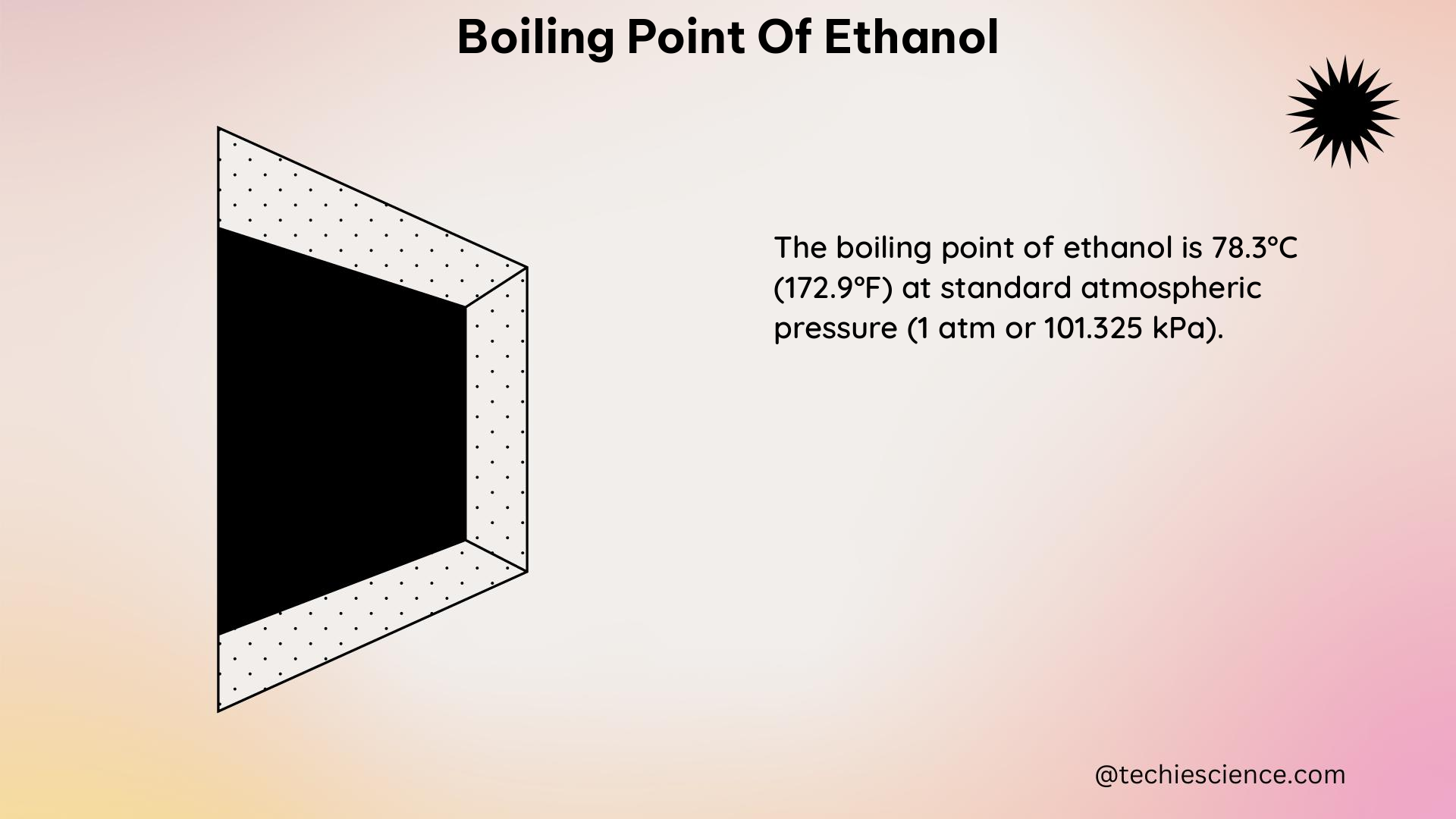The boiling point of ethanol, a crucial physical property for electronics students, is typically given as 78.37 degrees Celsius (or 172.87 degrees Fahrenheit) at standard atmospheric pressure (1 atmosphere or 101.3 kilopascals). This value is based on the vapor pressure of pure ethanol reaching equilibrium with its liquid phase at this temperature.
Understanding the Boiling Point of Ethanol
The boiling point of ethanol is a well-defined physical property that is influenced by various factors, including the presence of impurities and changes in external pressure. Let’s dive deeper into the intricacies of this important parameter.
Boiling Point of Pure Ethanol
The boiling point of pure ethanol at standard atmospheric pressure (1 atm or 101.3 kPa) is 78.37°C (172.87°F). This value is widely accepted and used in various applications, such as in the design and operation of distillation columns, temperature sensors, and other equipment that involves the handling or processing of ethanol.
Boiling Point Depression
The boiling point of ethanol can be affected by the presence of impurities or other substances in the mixture. This phenomenon is known as boiling point depression, and it is a colligative property that depends on the number of particles in the solution, rather than their identity.
For example, a mixture containing 95.58 mass % ethanol will boil at 78.15°C, which is slightly lower than the boiling point of pure ethanol. This is because the presence of other particles (such as water molecules) in the solution reduces the vapor pressure of the ethanol, causing it to boil at a lower temperature.
The extent of boiling point depression can be calculated using the following equation:
ΔTb = Kb × m
Where:
– ΔTb is the change in boiling point (in °C)
– Kb is the boiling point elevation constant for the solvent (for ethanol, Kb = 1.11°C/m)
– m is the molality of the solute (in mol/kg)
By using this equation, you can determine the boiling point of an ethanol-based solution with known concentrations of impurities or other substances.
Boiling Point under Vacuum Conditions
The boiling point of ethanol can be significantly reduced under vacuum conditions. For example, under a vacuum of 28 inches of mercury (inHg), the boiling point of ethanol drops to around 34°C (93.2°F).
This is because the vapor pressure of ethanol decreases as the external pressure is reduced, allowing it to boil at lower temperatures. The relationship between the boiling point and the external pressure can be described by the Clausius-Clapeyron equation:
ln(P2/P1) = -(ΔHvap/R) × (1/T2 – 1/T1)
Where:
– P1 and P2 are the vapor pressures at temperatures T1 and T2, respectively
– ΔHvap is the enthalpy of vaporization of the liquid
– R is the universal gas constant
By using this equation, you can calculate the boiling point of ethanol under different vacuum conditions, which is crucial for designing and operating equipment that involves the handling or processing of ethanol under reduced pressure.
Practical Applications for Electronics Students

The boiling point of ethanol is particularly relevant for electronics students in various applications, including:
-
Distillation Columns: Understanding the boiling point of ethanol is essential for the design and operation of distillation columns used to separate and purify ethanol-based solutions, such as those found in biofuel production or alcohol-based cleaning solvents.
-
Temperature Sensors: Knowing the boiling point of ethanol is important for the calibration and operation of temperature sensors used in equipment that handles or processes ethanol, ensuring accurate temperature measurements.
-
Vacuum Distillation: When working with ethanol-based solutions, the ability to predict the boiling point under vacuum conditions is crucial for the design and operation of vacuum distillation systems, which can be used to separate and purify ethanol at lower temperatures.
-
Ethanol-based Cooling Systems: The boiling point of ethanol is a key parameter in the design and operation of ethanol-based cooling systems, such as those used in electronic devices or industrial equipment.
-
Ethanol Fuel Cells: Understanding the boiling point of ethanol is important for the development and optimization of ethanol-based fuel cells, which can be used as power sources for various electronic devices and systems.
By mastering the concepts and applications related to the boiling point of ethanol, electronics students can enhance their understanding of the physical properties of this important chemical compound and its role in various electronic and industrial processes.
Conclusion
The boiling point of ethanol is a well-defined physical property that is crucial for electronics students to understand. This comprehensive guide has explored the intricacies of the boiling point of ethanol, including the factors that can influence it, such as the presence of impurities and changes in external pressure. By understanding the boiling point of ethanol and its practical applications, electronics students can better design, operate, and maintain equipment that involves the handling or processing of this important chemical compound.
References
- Braunlich, Phillip. “Lab2.9” (doc), Course Sidekick, 40921300.
- “Separating Ethanol from Water by Boiling”, Physics Forums, 2006-05-22.
- “Vacuum Distillation of Ethanol”, Science Forums, 2015-02-10.
- “The accepted boiling point of ethanol is 78.5 degrees C”, Homework Study, n.d.
- “Boiling point of ethyl alcohol”, ADI Forums, 2020-06-07.
- Ethanol Boiling Point and Vapor Pressure
- Boiling Point Depression Calculator
- Vacuum Distillation of Ethanol

The lambdageeks.com Core SME Team is a group of experienced subject matter experts from diverse scientific and technical fields including Physics, Chemistry, Technology,Electronics & Electrical Engineering, Automotive, Mechanical Engineering. Our team collaborates to create high-quality, well-researched articles on a wide range of science and technology topics for the lambdageeks.com website.
All Our Senior SME are having more than 7 Years of experience in the respective fields . They are either Working Industry Professionals or assocaited With different Universities. Refer Our Authors Page to get to know About our Core SMEs.